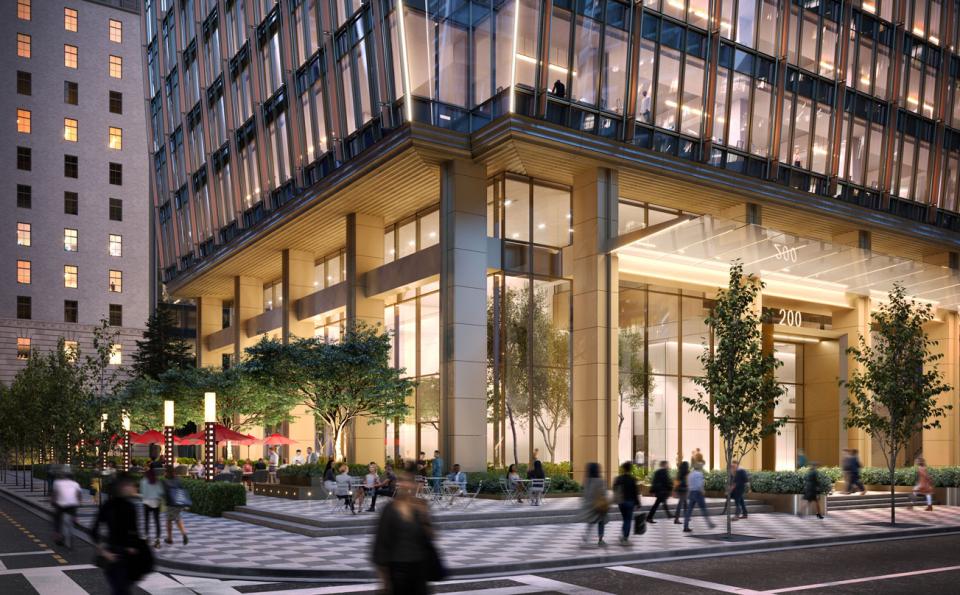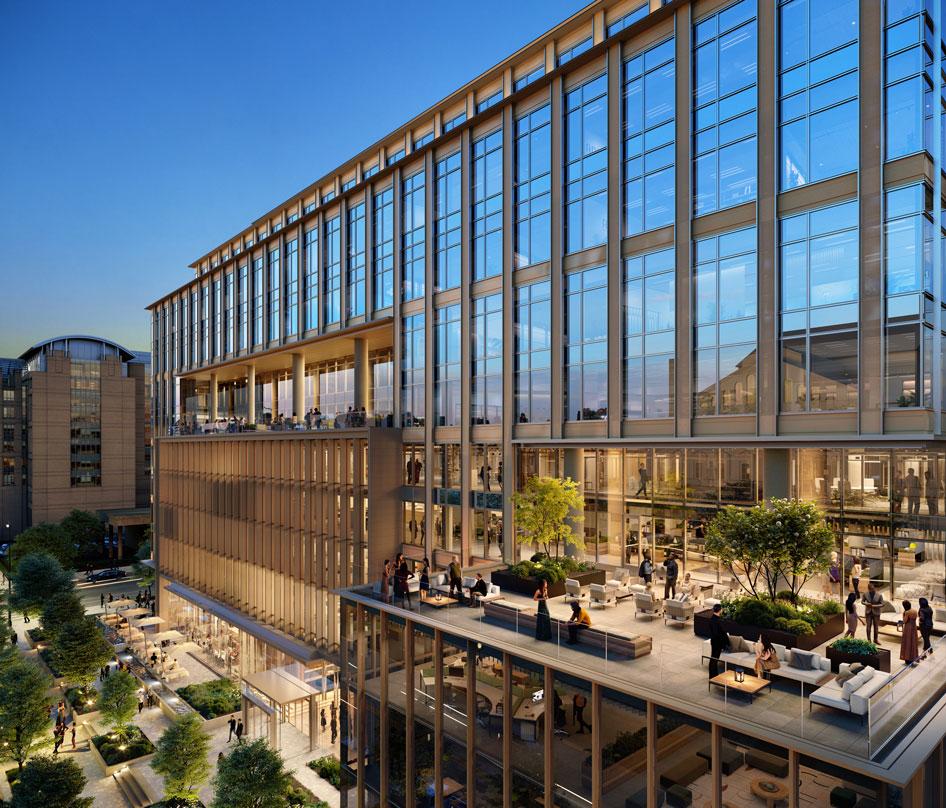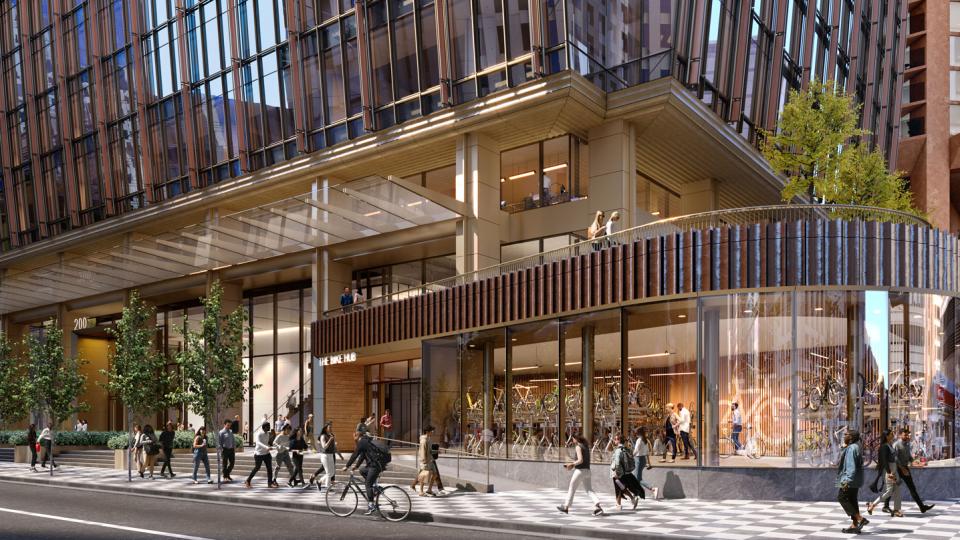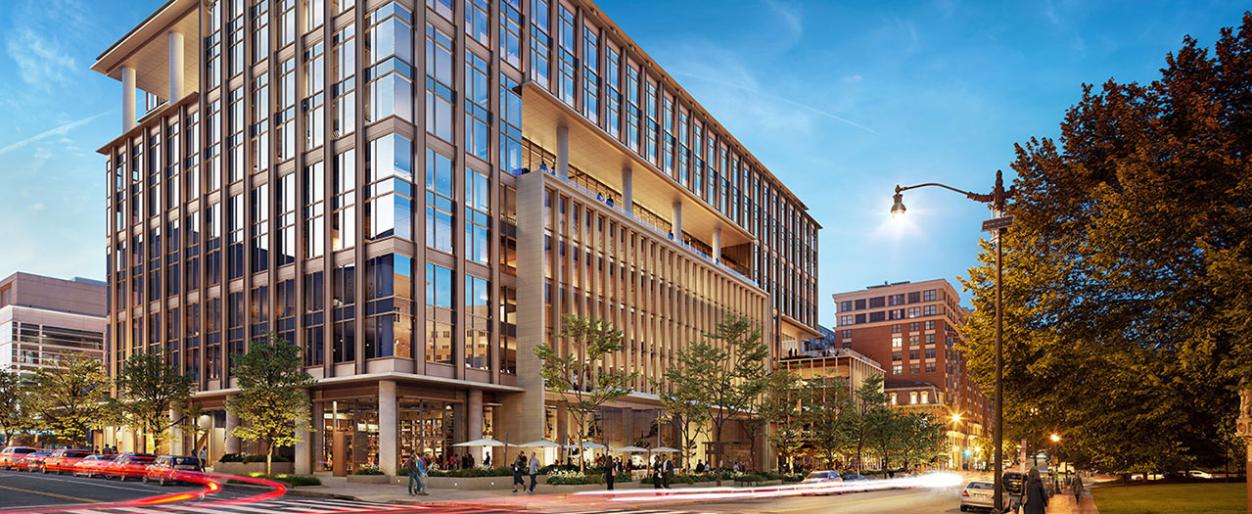Repositioning for Shifting Culture
The repositioning of a building is a strategic approach to add significant value to the property’s current value whether the intention is to retain tenants, recruit new tenants, and attract new users. Compared to new construction, repositioning projects can be more attractive to developers for the potential of sustainable decarbonization design goals, in addition to offering shorter project delivery times and disruption to the neighborhood. Considerations when reimaging an existing structure can include engaging an expanded audience, design for modernization and providing alternatives for inactive parking space.
Expanding the Audience
As city centers evolve, buildings can be repositioned to be more suited to the urban fabric of a neighborhood. Expanding the uses of a building or creating adjacencies that complement each other are opportunities to create busy and active urban environments. For example, planning a healthcare or out-patient surgical center with a healthy-focused juice bar, wellness studio or gym creates a well-rounded destination for individuals to visit through their health regimen. The diversity of uses creates an animated and lively center expanding the sites social activity level throughout the day, week, and weekend.

Design for Modernization
Buildings designed 50 or 100 years ago are often unable to meet the demands of the modern tenant. Personal mobility and seamless access to technology are top priorities in creating a modernized building to work, live and play. Wellness design that encourages movement through open communicating stairs, integrated greenspace and access to daylight are key interventions in providing healthy and memorable interior environments. Modernizing of infrastructure and mechanical systems to support effective indoor air quality, heating systems or efficient façade design can guarantee the building’s resilience for years to come.

Shifting Transit Culture
Increased access to transit, bike lanes, closed pedestrian streets and urban densification has alleviated car traffic in cities across the country. With this cultural shift, parking square footage has become underutilized space within buildings that can be repurposed for modern uses. The reclamation of parking space can be advantageous for developers to create immersive media spaces, data centers or attractive amenity spaces for tenants. Bike hubs, showers, concierge services, or ride-share drop-offs are integrated into the arrival and departure experiences of repositioned buildings to support the needs of the next-generation of commuters.


